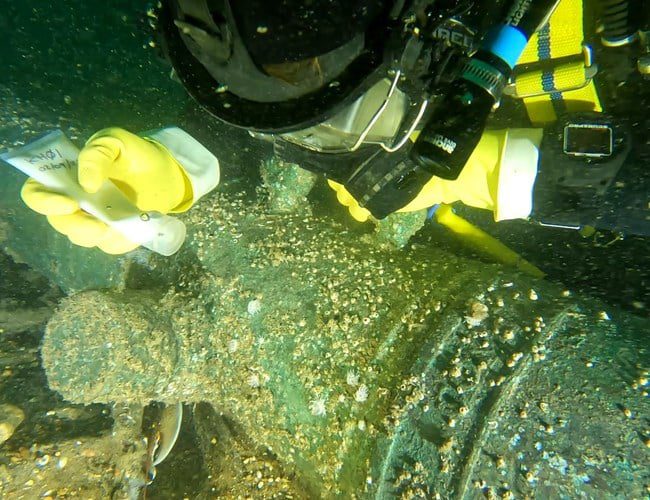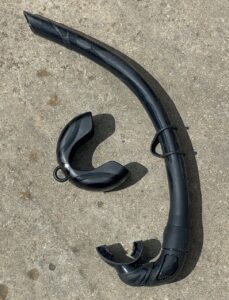As we mark the 50th anniversary of the Protection of Wrecks Act 1973, Historic England continues to research new and innovative approaches to reduce the risk of, and tackle, heritage crime at sea.
For the first time in the UK, Historic England is using new technology to forensically mark artefacts, including cannons from some of England’s 57 most-historic and archaeologically important Protected Wreck Sites. Marking these artefacts gives them even greater protection, as they will now be traceable.
This project by Historic England, working with MSDS Marine, the Cultural Heritage Agency of the Netherlands (RCE) and partners, is sending a direct message to potential thieves that underwater artefacts such as cannons on Protected Wreck Sites are ‘too hot to handle.’
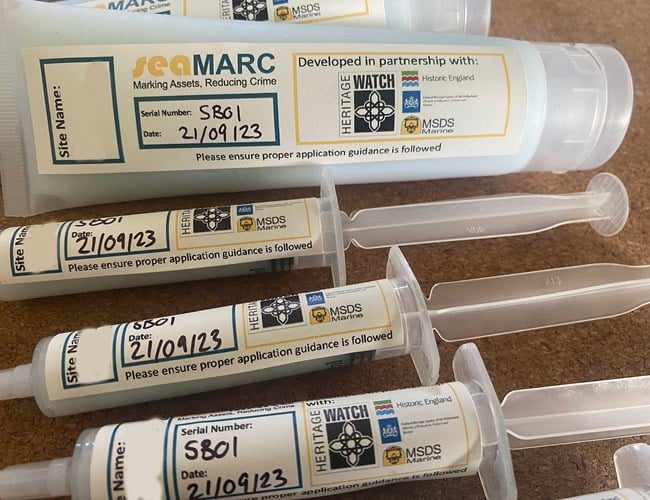
The new approach forms part of the Heritage Watch scheme, which aims to help prevent and detect heritage crime in local areas and encourages the public to use their eyes and ears to look after our cultural heritage.
In 2021, damage to the Protected Wreck Site of the 17th-century Dutch warship Klein Hollandia was documented by divers from the Nautical Archaeology Society, which led to a joint decision by the Cultural Heritage Agency of the Netherlands (RCE) and Historic England to support further investigation of the wreck.
They also agreed to continue to work towards new technology to make artefacts traceable. This is a significant development in the protection of vulnerable underwater archaeological sites.
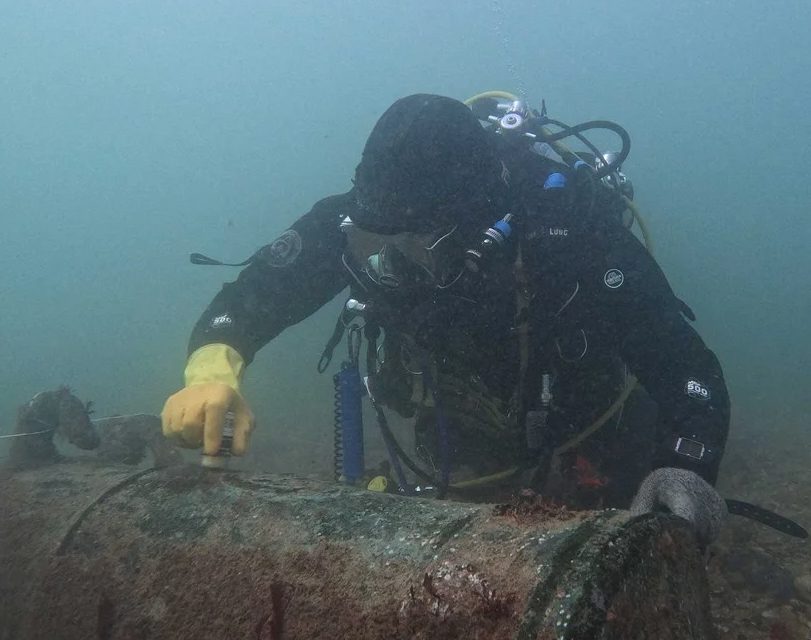
Mark Harrison, Head of Heritage Crime Strategy, Historic England, said: “This will act as a clear deterrent to those looking to unlawfully lift and remove historic material from Protected Wreck Sites.
“If someone breaks the law and removes any property, the new markings will give police the ability to link the offender to the crime scene and implement criminal proceedings.”
Funded by Historic England and the Cultural Heritage Agency of the Netherlands (RCE), the protective marking project was commissioned in 2018. MSDS Marine has been working since 2016 to develop a product for the forensic marking of historic material on Protected Wreck Sites.
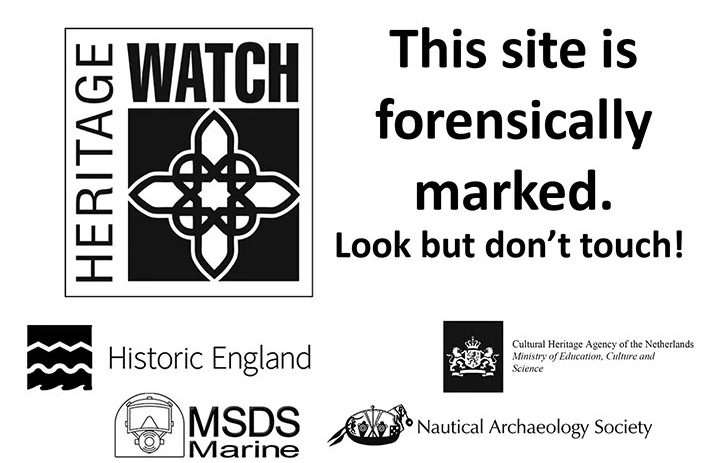
The product has been trialled on dives this summer and is similar to the kind of traceable products used to mark lead on church roofs at risk of theft and trace artefacts back to a particular site.
Duncan Wilson, Chief Executive of Historic England, said: “Our nationally important shipwrecks tell the story of England’s maritime past. Underwater forensic marking of artefacts is a great leap forward in helping to protect them.
“We are pleased to be working with the Cultural Heritage Agency of the Netherlands on this project and to further our research into the 17th-century Dutch warship Klein Hollandia. International collaboration like this is so important for preserving our shared maritime heritage.”
MSDS Marine Heritage and Systems Manager Alison James explained: “This protective marking project is a game changer for maritime archaeology and how authorities protect sites underwater. 2023 is the 50th anniversary of the legislation that enables the protection of wreck sites and it seems completely fitting that this product has finally been deployed to help protect them for the next 50!”
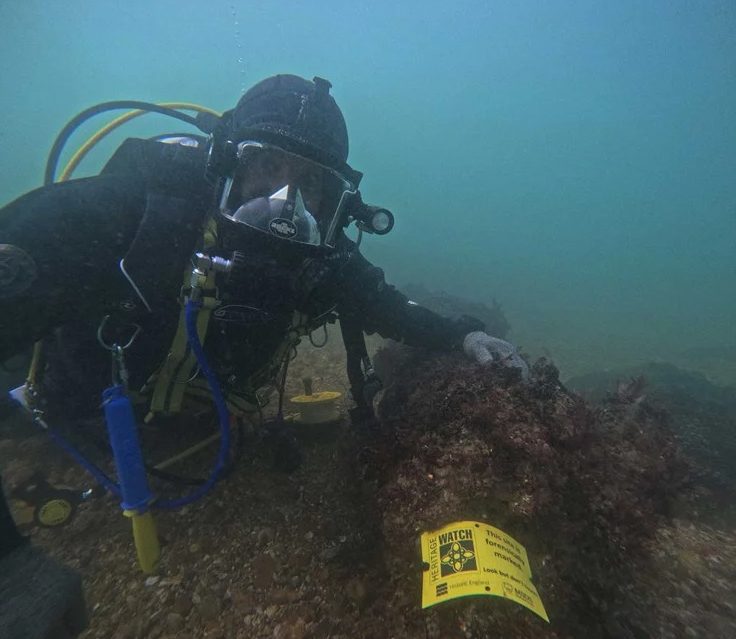
Mark Beattie Edwards, CEO of the Nautical Archaeology Society and licensee of the 17th-century Dutch warship Klein Hollandia wreck site, said: “We are very happy that the Klein Hollandia was chosen for the forensic marking project. Being so far offshore, it is vulnerable to illegal visits and recoveries. This new technology will give us peace of mind.”
50th anniversary of the Protection of Wrecks Act 1973
There are 37,000 known shipwrecks off England’s coastline, a legacy of Britain’s industrial past and over 6,000 years of maritime trade and warfare. This year is the 50th anniversary of the Protection of Wrecks Act 1973, which grants the highest level of protection to 57 of them.
This means that only licensed divers can dive them and their contents are protected by law. The condition of these sites is also closely monitored by licensed divers.
As well as managing the licensing of access to Protected Wreck Sites on behalf of the Department for Culture, Media and Sport (DCMS), Historic England provides grant funding for projects to secure the preservation of these sites.

Photo credit: Historic England / MSDS Marine / Martin Davies
